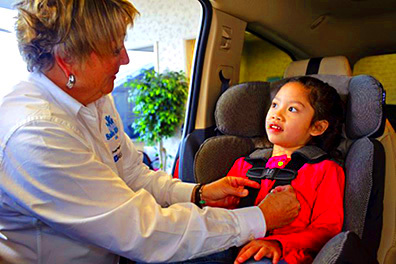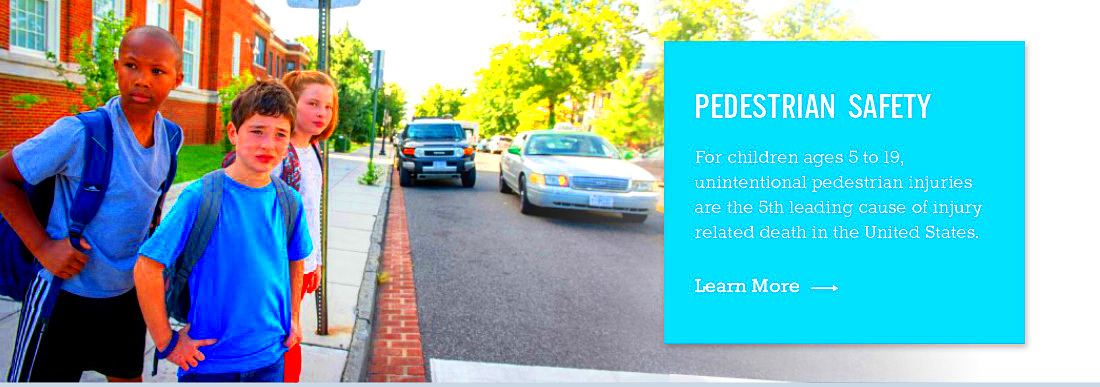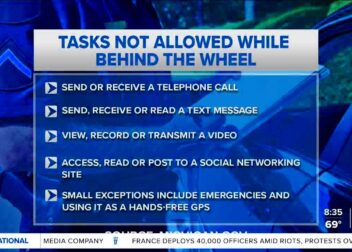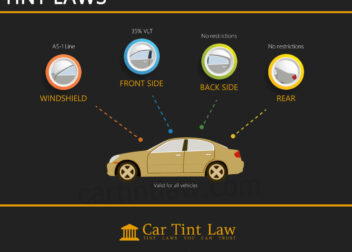Enforcement of Child Passenger Safety Laws in Connecticut
Making sure our kids are safe during trips is something every parent worries about. In Connecticut there are specific laws in place to safeguard young passengers because using car safety measures is vital for their protection. These regulations not aim to meet national standards but also cater to the needs and concerns of the community. I remember feeling anxious as a parent trying to choose the car seat for my child but it was comforting to know that the law supported us. Familiarizing yourself with these rules can help alleviate that stress and ensure that you do everything possible to keep your child secure while traveling.
Overview of Connecticut’s Child Passenger Safety Regulations

Connecticuts regulations on child passenger safety are thorough and designed to address different aspects of car seat usage for optimal protection. The states laws are in line with federal standards while also incorporating extra provisions that cater to specific regional circumstances.
Key regulations include:
- Rear-Facing Seats: Children under the age of two must be secured in a rear-facing car seat. This position is proven to provide better protection for the child’s head, neck, and spine during a collision.
- Forward-Facing Seats: Once children outgrow the rear-facing seat (typically around age two), they should be placed in a forward-facing car seat with a harness system. This stage is essential until the child reaches the maximum weight or height limit specified by the seat manufacturer.
- Booster Seats: After outgrowing the forward-facing seat, children should use a booster seat until they are tall enough for the seat belt to fit properly. This usually occurs around the age of eight or when they reach 4 feet 9 inches in height.
- Seat Belts: Once children no longer need a booster seat, they should use a seat belt properly. The seat belt should fit across the lap and shoulder, with the lap belt lying low on the hips and the shoulder belt crossing the middle of the chest.
These rules are established to guarantee that every child, regardless of their age or size is properly strapped in for their journey. Adhering to these recommendations allows parents to safeguard their little ones from possible harm in case of an unexpected incident.
Key Requirements for Different Age Groups

Grasping the specific needs for different age groups is crucial to guarantee that every phase of a childs growth is backed by the right car safety gear. Lets take a closer look at this:
| Age Group | Car Seat Type | Details |
|---|---|---|
| Under 2 Years | Rear-Facing Car Seat | Children should be in a rear-facing car seat with a 5-point harness. This position is crucial for protecting the child’s head, neck, and spine in the event of a crash. |
| 2 to 4 Years | Forward-Facing Car Seat | Once outgrown the rear-facing seat, children should be secured in a forward-facing car seat with a harness system until they exceed the height or weight limits of the seat. |
| 4 to 8 Years | Booster Seat | Children should use a booster seat to ensure the seat belt fits properly. They should remain in a booster seat until they are tall enough for the seat belt to fit correctly without it. |
| 8 Years and Up | Seat Belt | Children should use a seat belt that fits properly across the lap and shoulder. They should no longer need a booster seat if the seat belt fits correctly. |
Every phase is tailored to support the child’s development and prioritize their well being. Regularly checking the car seat regulations and making updates as your child matures is always wise. Keep in mind that these precautions are not mere legal obligations but crucial steps to protect our youngsters on every trip.
Penalties for Non-Compliance with Safety Laws
Neglecting Connecticuts child passenger safety laws can have repercussions. I recall the moment as a parent when I understood that not following these rules could put my childs well being at risk and also create problems. Its a wake up call about the significance of being aware and adhering to the regulations.
Here’s the scoop on the consequences you should be aware of.
- Fines: If caught not using the appropriate car seat, you may face fines. The amount can vary depending on the severity of the violation. For instance, not using a car seat at all could result in a higher fine compared to an improperly installed seat.
- Points on Driving Record: Repeated violations may result in points being added to your driving record. Accumulating too many points can lead to further penalties, including increased insurance premiums.
- Mandatory Safety Courses: In some cases, offenders may be required to attend a child passenger safety course. This is intended to educate parents on the correct use of car seats and ensure future compliance.
- Legal Consequences: Persistent non-compliance could lead to more serious legal consequences, such as court appearances. Ensuring that you’re compliant not only keeps your child safe but also helps you avoid these legal troubles.
These punishments highlight the significance of ensuring that children are safely restrained in cars. Following the regulations not only protects your childs safety but also helps you steer clear of any legal troubles.
How Law Enforcement Monitors Compliance
In Connecticut the police play a role in making sure that laws regarding the safety of child passengers are upheld. They take a mix of preventive and responsive actions to safeguard children and enforce the rules. Based on my observations I’ve witnessed how watchful the authorities can be in ensuring road safety.
Here’s how they monitor compliance:
- Traffic Stops: Officers may issue citations during routine traffic stops if they observe that a child is not properly secured. This is often the most direct way to enforce compliance and address violations.
- Special Checkpoints: Periodic checkpoints specifically focused on child passenger safety are conducted. These checkpoints allow law enforcement to inspect car seats and ensure they meet legal requirements.
- Educational Programs: Police departments often collaborate with community organizations to run educational programs. These initiatives aim to raise awareness about the importance of child passenger safety and provide guidance on proper car seat use.
- Public Awareness Campaigns: Through media campaigns and public service announcements, law enforcement helps keep the community informed about child passenger safety laws and updates. These campaigns are essential for educating parents and caregivers about their responsibilities.
Through the use of these tactics, law enforcement plays a role in keeping parents aware and adhering to safety rules with the aim of creating a safer setting for children on the roadways.
Recent Updates and Changes to the Laws
Child passenger safety laws are not set in stone they change with advancements in research and technology. Its crucial for parents to stay informed about these updates. I recall feeling both puzzled and relieved when new rules were announced it was akin to receiving a fresh set of instructions for a game that keeps evolving.
Here are some of the latest news and modifications:
- Extended Rear-Facing Requirements: Recent updates have extended the requirement for rear-facing car seats. Children must remain in rear-facing seats until they are at least two years old, compared to the previous requirement of one year.
- Enhanced Safety Standards: New safety standards have been introduced to improve the design and effectiveness of car seats. These include stricter crash test requirements and better side-impact protection.
- Updated Height and Weight Limits: The regulations now specify more detailed height and weight limits for car seats and booster seats, ensuring better fit and protection for growing children.
- Improved Booster Seat Guidelines: Guidelines for booster seats have been updated to reflect the latest research on optimal seat belt positioning and crash protection.
These changes aim to enhance safety measures for children and ensure that car safety features meet the most recent standards. Keeping yourself updated on these modifications can assist you in making decisions regarding your childs well being and adhering to legal requirements.
Resources for Parents and Caregivers
Understanding the laws regarding child passenger safety can be a daunting task, particularly for parents or guardians. I can relate to that feeling of pressure when it comes to making sure my childs car seat is properly secured. Fortunately there are plenty of resources out there to assist you in this journey and offer valuable guidance along the way.
Here are some helpful resources:
- Local Health Departments: Many local health departments offer free car seat checks and installation assistance. They often host events where certified technicians will inspect your car seat to ensure it meets safety standards.
- National Highway Traffic Safety Administration (NHTSA): The NHTSA provides extensive online resources, including a car seat finder tool and instructional videos on how to install various types of car seats correctly.
- Certified Child Passenger Safety Technicians (CPSTs): These professionals are trained to assist with car seat installation and offer advice tailored to your specific situation. You can find a CPST through local parenting groups or online directories.
- Parenting Support Groups: Online forums and local parenting groups often have discussions about car seat safety and can provide recommendations based on other parents’ experiences.
- Books and Guides: Numerous books and online guides offer detailed information on child passenger safety. Look for ones that are regularly updated to reflect the latest regulations and safety standards.
By using these resources you can stay current on the latest safety protocols and boost your confidence in your caregiving responsibilities. Keep in mind that a knowledgeable caregiver is a more secure one!
Tips for Ensuring Your Child’s Safety
Making sure your kid is safe in the car is not just about sticking to the rules; it’s about making every trip a secure one. Thinking back on my own moments I recall all the tweaks I made to make sure my childs car seat was locked in place. Here are a few helpful suggestions to keep your little one protected, during travels.
- Choose the Right Car Seat: Ensure you have the correct car seat for your child’s age, weight, and height. Each stage—rear-facing, forward-facing, and booster—has specific requirements. Refer to the car seat manual and state regulations for guidance.
- Install Properly: Car seat installation can be tricky. Use the LATCH system if available, or securely fasten the seat using the vehicle’s seat belt. Check for movement; the seat should not move more than an inch side-to-side or front-to-back.
- Check the Harness: The harness straps should be snug and positioned correctly. For rear-facing seats, the harness should be at or below the child’s shoulders, while for forward-facing seats, it should be at or above the shoulders.
- Regular Inspections: Periodically check that the car seat is still correctly installed and that it still fits your child properly. Adjust straps and re-install as your child grows.
- Educate Yourself: Stay informed about the latest safety guidelines and updates. Attend workshops or watch instructional videos to keep your knowledge current.
By following these straightforward but important measures you can greatly enhance your child safety while driving. It’s all about taking the initiative and being mindful of their requirements.
FAQ
1. What should I do if I’m unsure about the installation of my car seat?
If you’re not sure how to install your car seat reach out to a qualified Child Passenger Safety Technician CPST for assistance. Numerous health departments and community groups provide complimentary car seat inspections and installation support.
2. How often should I replace my child’s car seat?
If your kids car seat has been in an accident you should replace it even if there are no visible signs of damage. Its safety may be compromised. Additionally make sure to adhere to the manufacturers recommendations regarding expiration dates usually every 6 to 10 years.
3. Can I use a second-hand car seat?
It is not advisable to use a car seat unless you can confirm its past and ensure that it is not outdated or subject to a recall. Always look, into safety recalls and ensure that the seat is undamaged.
4. When can my child switch from a booster seat to a seat belt?
Kids can transition from using a booster seat to wearing a seat belt when they are tall enough for the seat belt to secure correctly. This usually happens when they reach a height of about 4 feet 9 inches and are between 8 to 12 years old.
5. What are the consequences of not following child passenger safety laws?
Failing to follow child passenger safety regulations may lead to penalties, demerits on your driving history and possibly being required to attend safety classes. Moreover using a child seat can put your childs well being at risk during an accident.
Conclusion
Making sure your child is safe in the car goes beyond just following the law it’s a heartfelt duty that every parent feels deeply. From my own journey I’ve had my fair share of learning moments when it comes to car seat safety. It’s evident that knowing and following Connecticuts child passenger safety laws is vital for keeping our little ones protected. These laws serve as a framework not mere suggestions to ensure our childrens well being on every trip. By staying updated utilizing available resources and adhering to the provided tips you can do everything within your power to keep your child safe. Remember each step, towards using a car seat properly is a step towards securing your childs future. Lets make every ride a safe one.

